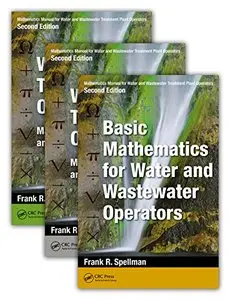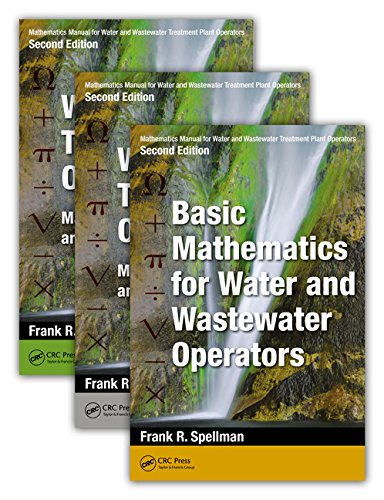Frank R. Spellman , "Mathematics Manual for Water and Wastewater Treatment Plant Operators, 2nd Edition (Three Volume Set)"
2014 | ISBN-10: 1482224747 | 799 pages | PDF | 5 MB
2014 | ISBN-10: 1482224747 | 799 pages | PDF | 5 MB
To properly operate a waterworks or wastewater treatment plant and to pass the examination for a waterworks/wastewater operator’s license, it is necessary to know how to perform certain calculations. All operators, at all levels of licensure, need a basic understanding of arithmetic and problem-solving techniques to solve the problems they typically encounter in the workplace.
Hailed on its first publication as a masterly account written in an engaging, highly readable, user-friendly style, the Mathematics Manual for Water and Wastewater Treatment Plant Operators, Second Edition has been expanded and divided into three specialized texts that contain hundreds of worked examples presented in a step-by-step format. They are ideal for all levels of water treatment operators in training and practitioners studying for advanced licensure. In addition, they provide a handy desk reference and handheld guide for daily use in making operational math computations.
Basic Mathematics for Water and Wastewater Operators introduces and reviews fundamental concepts critical to qualified operators. It builds a strong foundation based on theoretical math concepts, which it then applies to solving practical problems for both water and wastewater operations. Water Treatment Operations: Math Concepts and Calculations covers computations used in water treatment, and Wastewater Treatment Operations: Math Concepts and Calculations covers computations commonly used in wastewater treatment plant operations. The volumes present math operations that progressively advance to higher, more practical applications, including math operations that operators at the highest level of licensure would be expected to know and perform.
To ensure correlation to modern practice and design, the volumes provide illustrative examples for commonly used waterworks and wastewater treatment operations covering unit process operations found in today’s treatment facilities. Readers working through the books systematically will acquire a definitive understanding of and skill in performing the applied water/wastewater calculations that are essential for a successful career in the water industry.



